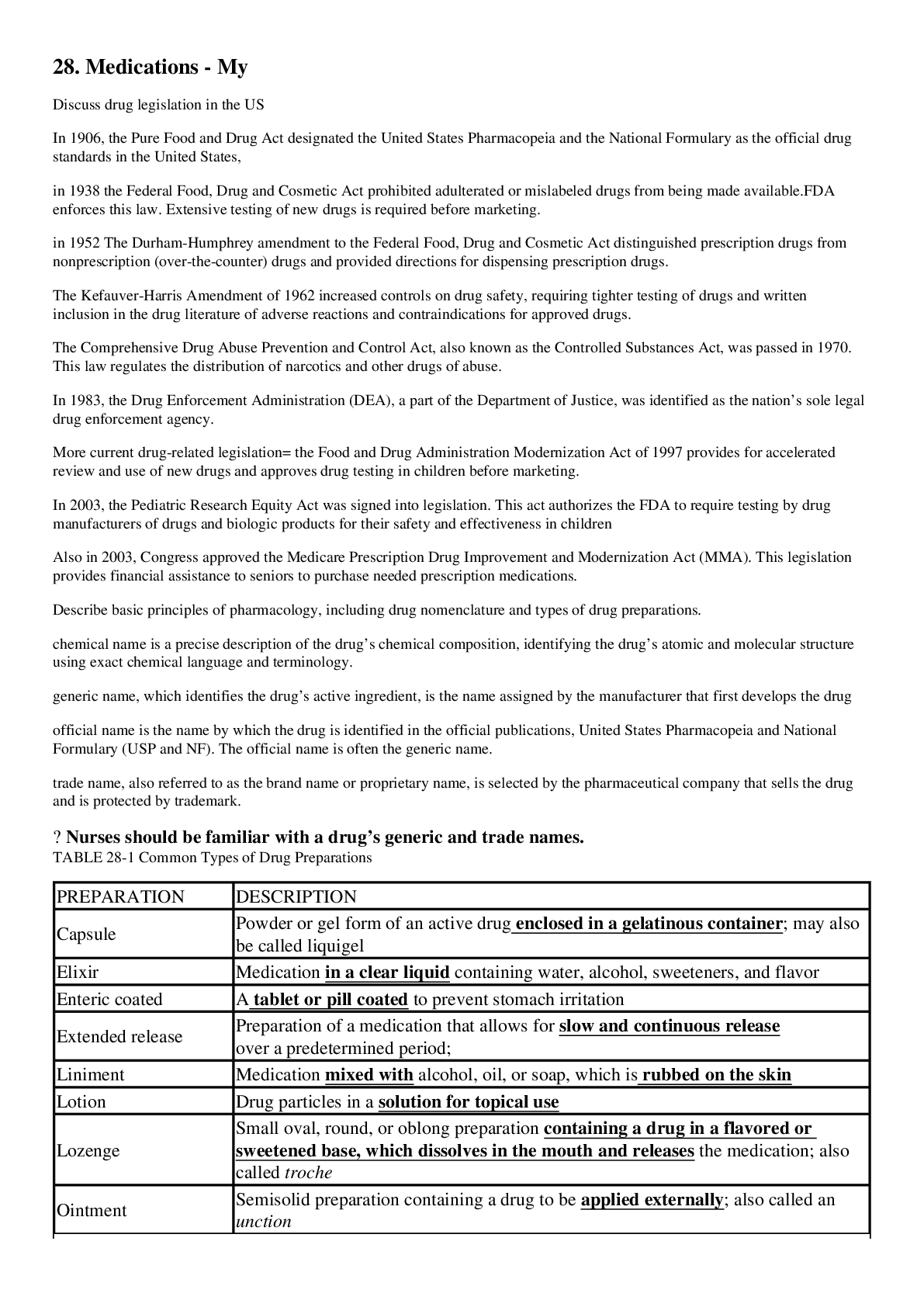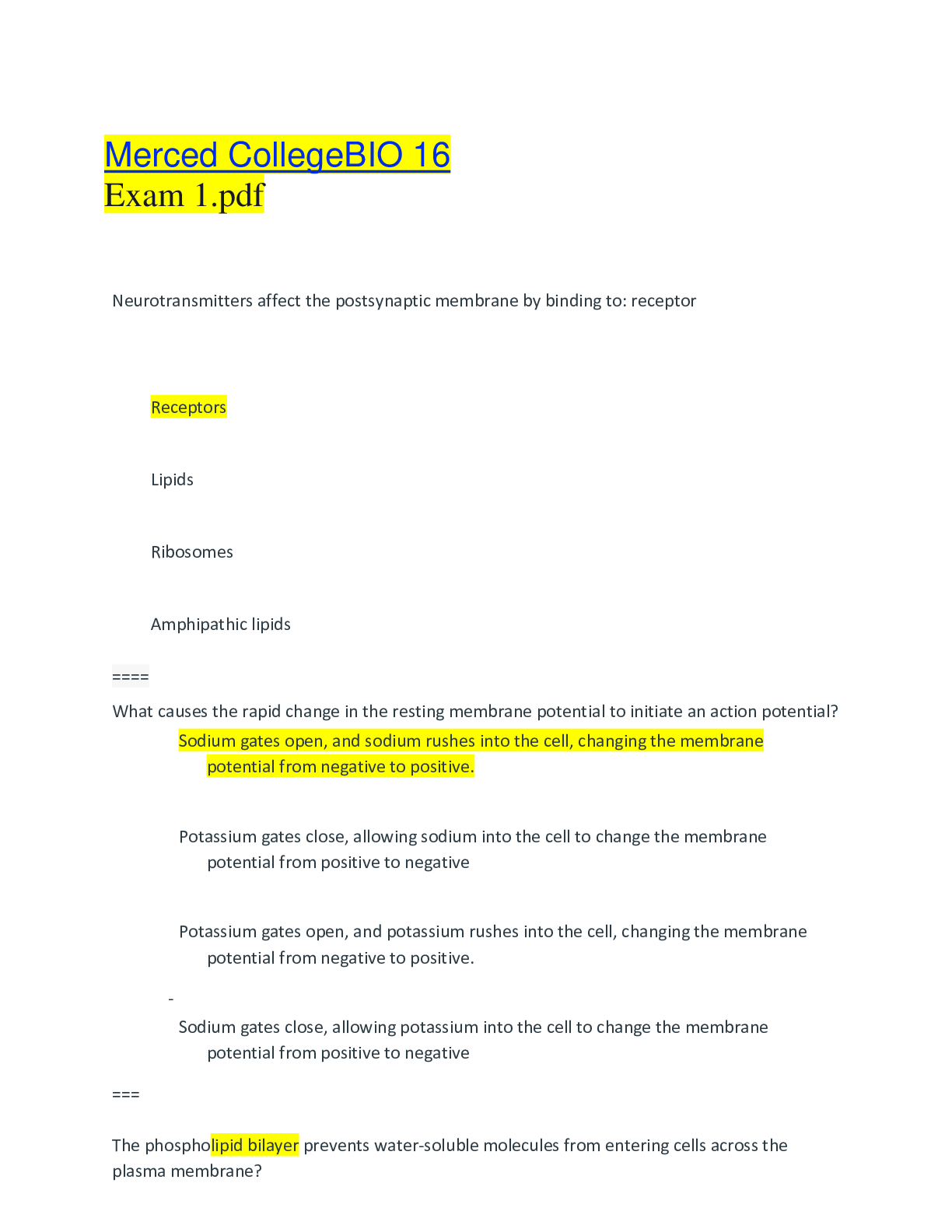History > QUESTIONS & ANSWERS > APHIST Chapter 22 - 28 Test Yourself Questions and Answers (All)
APHIST Chapter 22 - 28 Test Yourself Questions and Answers
Document Content and Description Below
Chapter 22 1. The fifteenth- and sixteenth-century voyages of exploration were stimulated mainly by: The individual explorers’ hopes of enrichment 2. Which of the following did Magellan’s epic v... oyage prove? That the islands called the “Spice Lands” could be reached from the East 3. Which of the following nations was most persistently committed to converting the natives of the newly discovered regions to Christianity? Spain 4. What is the correct sequence of explorer-traders in the Far East? Portuguese, Dutch, English 5. Mercantilism aimed first of all at securing a favorable balance of foreign trade 6. The first to engage in the slave trade were the: Portuguese 7. Which proved to be the most important of the various new foods introduced into European diets by the voyages of discovery? Potatoes 8. The sixteenth-century inflation affected which group most negatively? Landholding nobles Chapter 23 2. Which of the following regions remained mostly Catholic despite the Reformation? France 3. Luther’s anger over the sale of indulgences led to: The posting of the Ninety-Five Theses The most devastating effects of pandemics on the native population brought about by European discovery occurred in: Latin America A major disruption of European trade occurred in the fifteenth century when Ottoman Turks took over Constantinople In the context of sixteenth- and seventeenth-century trade, the term “factory” meant Fortified stations to hold goods until a ship arrived Which explorer is incorrectly matched with his voyage? Afonso da Albuquerque—Cuba, coast of Mexico Who organized the first voyage to circumnavigate the globe? Spanish motives for exploration mixed: Roman Catholic evangelization with a desire for wealth Muslim traders preferred to deal with the Dutch, rather than the Spanish, because the Dutch Did not send missionaries to try to convert natives Who benefited most from the success of Dutch spice and luxury trade? All of the following are tenets of mercantilism except: The government should refrain from any involvement in economic matters Which Western Hemisphere food most transformed European diets and contributed to better nutrition and population growth? Potatoes 19. An example of the Columbian Exchange was: The Spanish introduced cattle to the Americas In the sixteenth century, the sudden influx of American silver into the European economy led to inflation Which of the following statements on the Reformation is false? Anglicanism is a strict form of Calvinism that developed in England. Which of the following practices or beliefs is associated with Calvinism? Predestination of souls The Edict of Nantes gave Protestants in France a degree of official toleration The effective founder of absolute monarchy in France was: Cardinal Richelieu Raison d’état was used to: Buttress the power of the French monarchy The message conveyed by Hobbes’s government to avoid anarchy Leviathan was, in brief, that: Man needed a powerful The major weakness of the Absolutist State in the Habsburg Domains was: The lack of integration of its multi-ethnic population East of the Elbe, the feudal landlords of the fifteenth through seventeenth centuries maintained or increased their local powers and prestige The Reformation was rooted in: Political and social developments as well as religious disputes Which of the following statements about Martin Luther is incorrect? He called on the rulers of France, Scotland, and the Netherlands to adopt Lutheran doctrines Parliament’s Act of Supremacy of 1534: Made the king head of the Church of England without any significant change in Catholic doctrine Ignatius Loyola: Founded the Society of Jesus (Jesuits) While ending the Thirty Years’ War, the Peace of Westphalia established the principle of: State sovereignty As the best example of royal absolutism, Louis XIV did all of the following except: Keep peace with other countries Although Charles I of England tried to rule without consulting Parliament, he finally had to call Parliament just prior to the civil war because he needed: Money to raise an army John Locke’s views in “Two Treatises of Civil Government” include all of these ideas EXCEPT: Citizens have no recourse against tyrannical government What is the significance of England’s Glorious Revolution of 1688? The monarch had to accept terms that prevented royal absolutism by establishing a constitutional monarchy Peter the Great: Promoted Western science, technology, and culture in Russia The Treaty of Karlowitz: hands of the Hapsburgs Followed a series of defeats suffered by the Ottomans at the The Ottoman Empire began: As a ghazi frontier state In the Ottoman Empire, janissaries and concubines shared one characteristic. They both: Were taken from their parents at an early age The treatment of non-Muslims in the Balkans under Ottoman rule: Deteriorated sharply in the seventeenth and eighteenth centuries Suleiman the Magnificent accomplished all of these except Organized in their beginnings around a Sufi order Shi’ite Islam: Became the dominant sect in Iran/Persia conquering Vienna The Ottoman and Safavid empires were similar in one respect. They both were: Which of these Muslim rulers was remarkable for his religious tolerance? Akbar the Great The Taj Mahal was built by Shah Jahan as a mausoleum for a favorite wife The Ottoman millet system addressed the complicated issue of: Religious diversity After more than 300 years of conflict, the Ottoman Empire defeated the Byzantine Empire when Mehmet took the nearly impregnable city of: Constantinople Known for his military power, expansion of the Empire, and beautiful buildings, the greatest sultan of the Ottoman Empire was: Suleiman At its height in the early sixteenth century, the Ottoman Empire extended into southeastern Europe up to the gates of which city? Vienna Persia reached a cultural high point in the seventeenth century during the reign of the Safavid shah named: Abbas The most magnificent Safavid (Persian) city was: Isfahan Identify the Mughal Emperor, a contemporary of Elizabeth I of England, who was famous for his efficient administration and policy of religious and social toleration, as well as his territorial expansion. Akbar Most of the Mughal Empire’s subjects were: Hindu [Show More]
Last updated: 1 year ago
Preview 1 out of 5 pages
Instant download
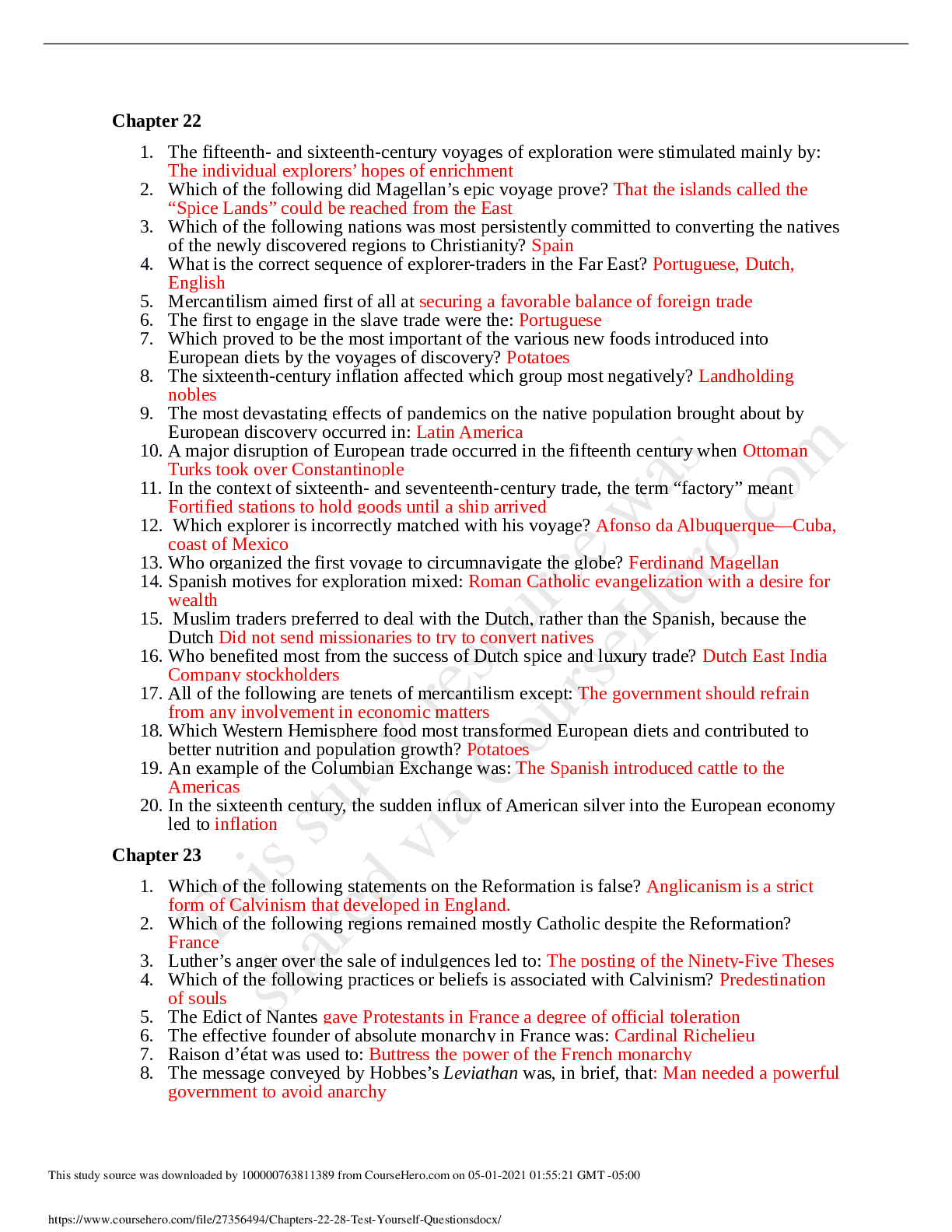
Buy this document to get the full access instantly
Instant Download Access after purchase
Add to cartInstant download
Reviews( 0 )
Document information
Connected school, study & course
About the document
Uploaded On
Jun 10, 2021
Number of pages
5
Written in
Additional information
This document has been written for:
Uploaded
Jun 10, 2021
Downloads
0
Views
51

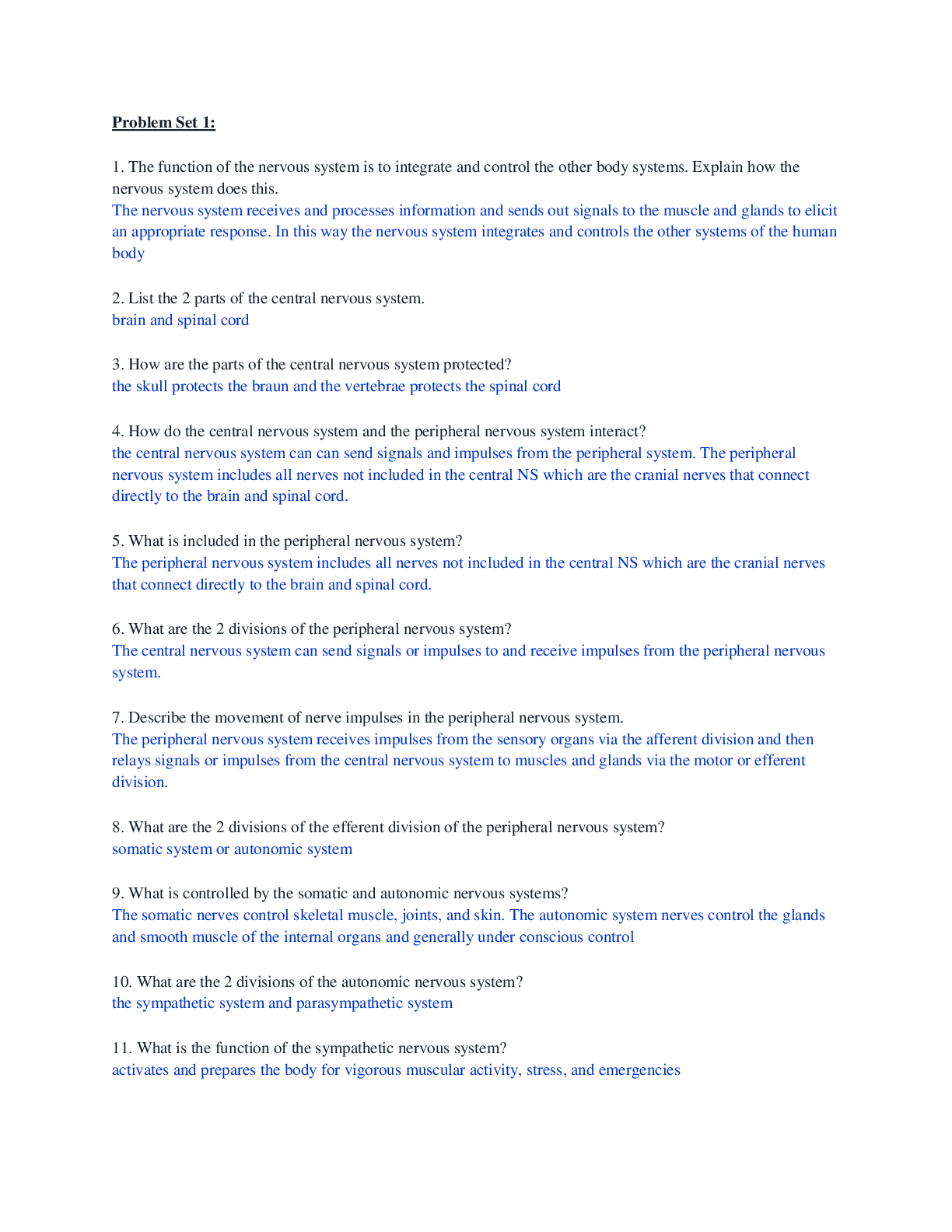
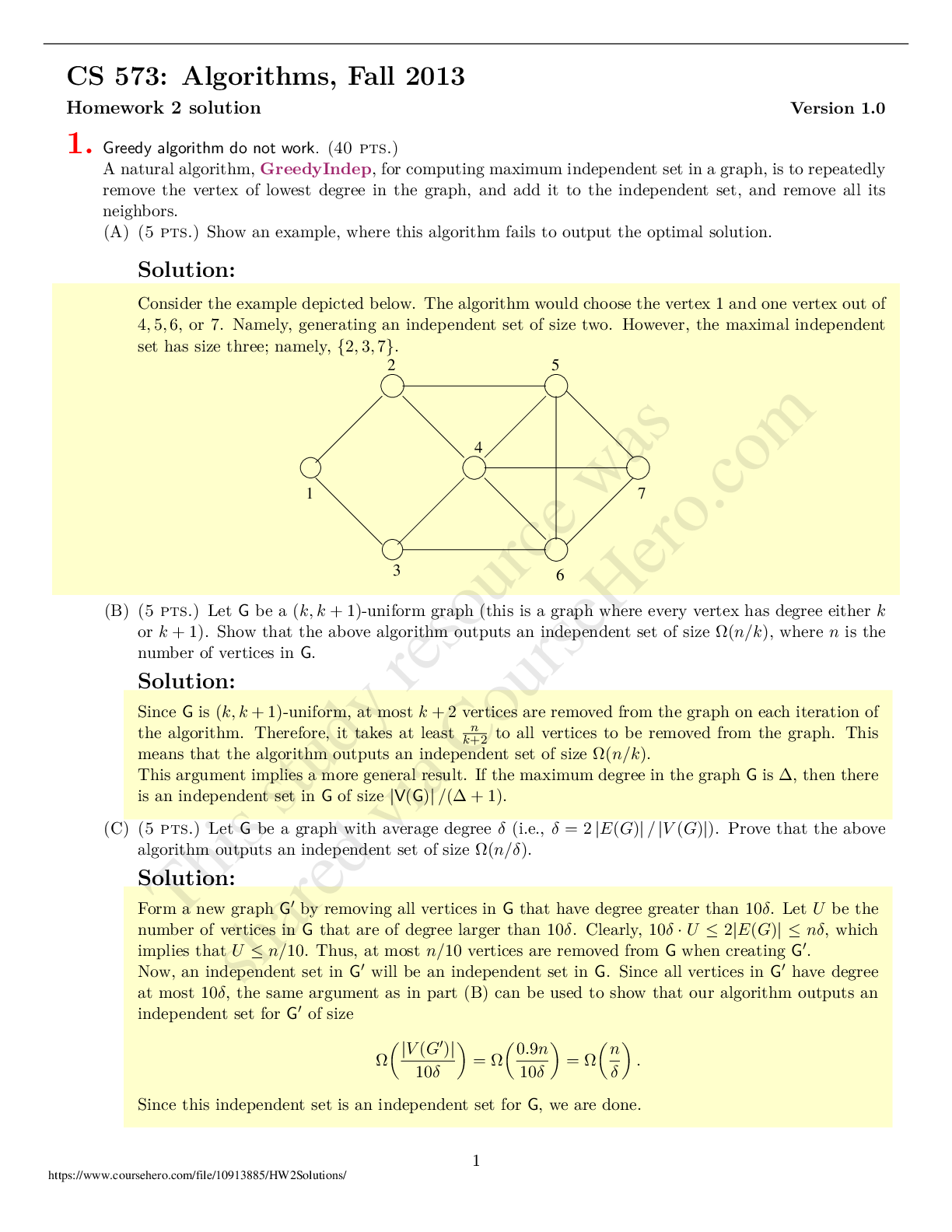
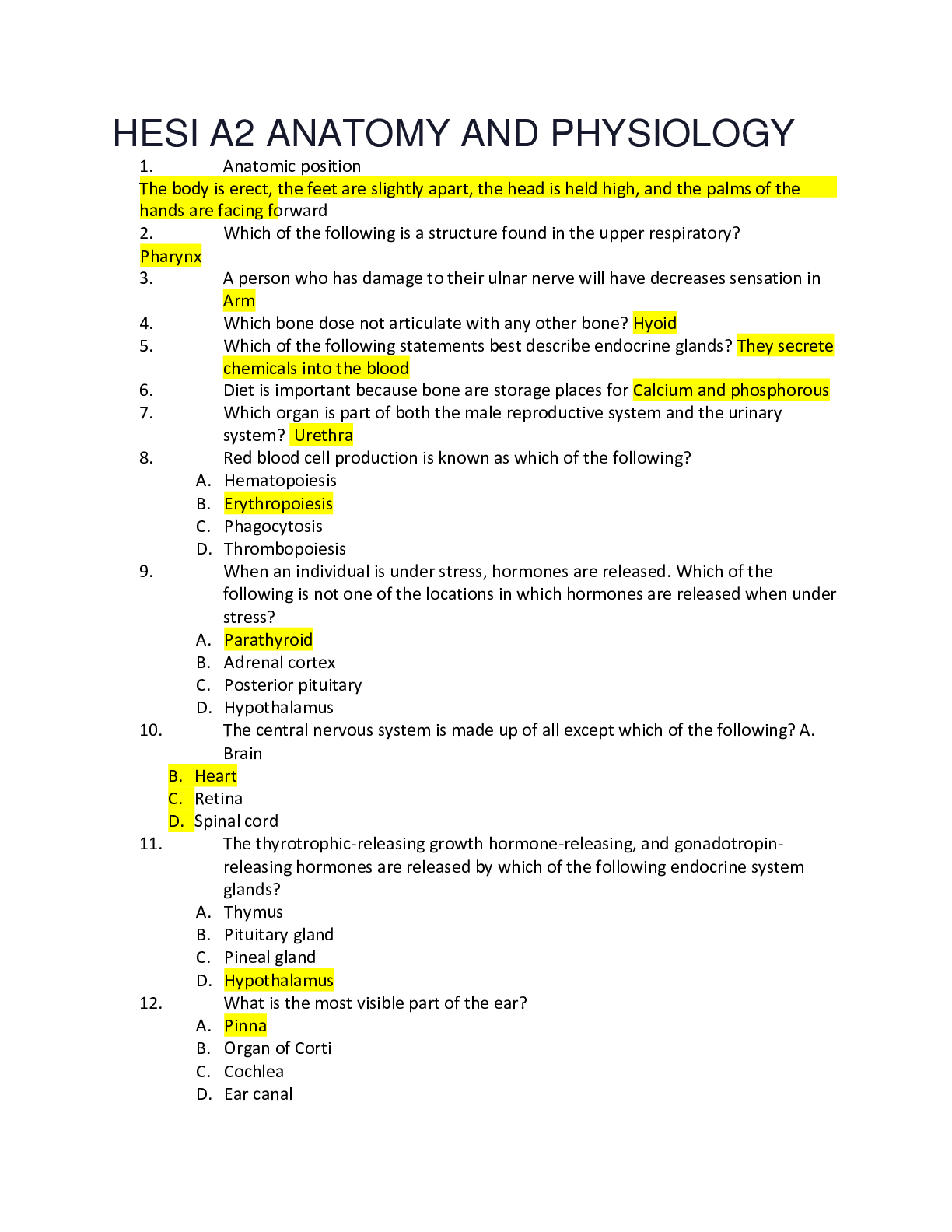
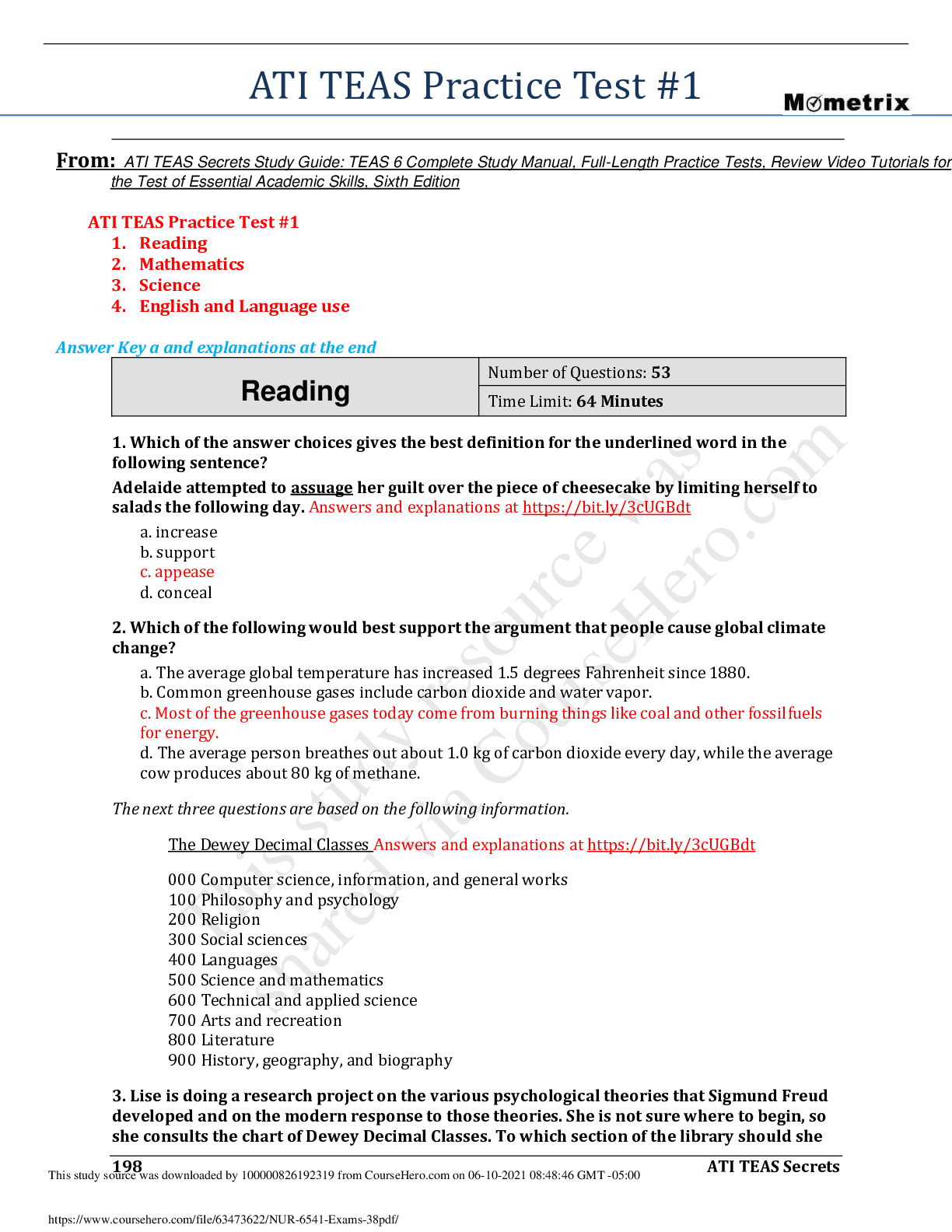
.png)

